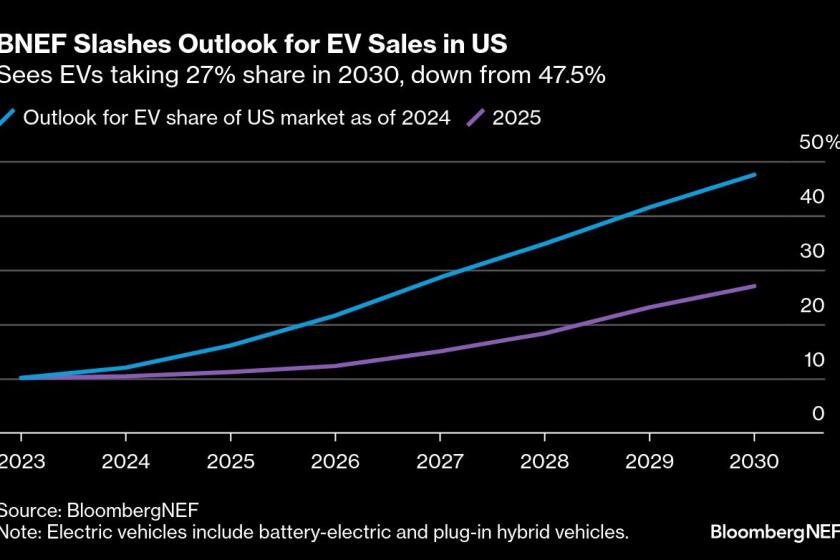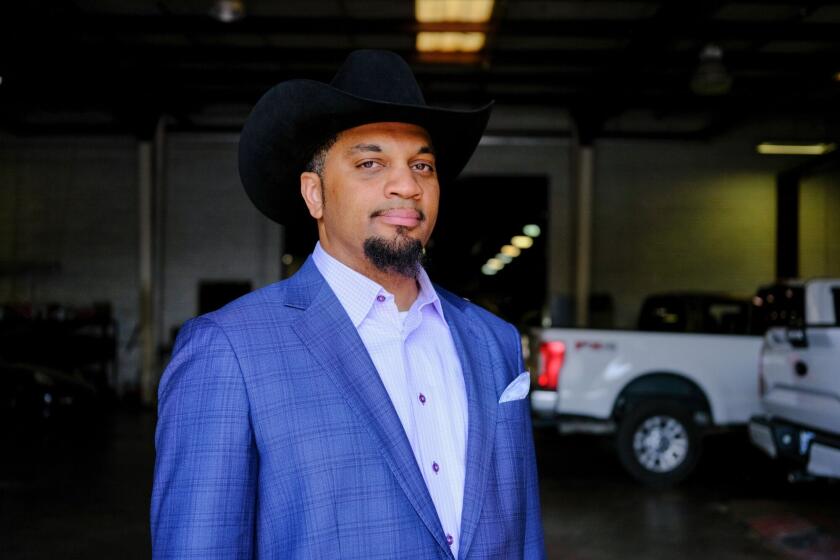Electric Cars Touted as Plant Opens
- Share via
Environmentalists and businessmen used the dedication Friday of a Carson-area electric vehicle assembly plant to tout the fledgling industry the week before the California Air Resources Board votes on moving forward with its mandate for mass-produced electric cars beginning in 1998.
The opening of the U.S. Electricar plant, which can convert up to 60 cars a month, demonstrates that adequate technology is available for major manufacturers to build the mandated 20,000 to 25,000 emission-free cars yearly, said the firm’s chief operations officer, Carl Dean Perry. “The time is now,” he said. “The quality, safety and reliability of the product are here.”
However, the plant, which began training workers last year with the assistance of $210,000 in grants from the cities of Los Angeles and Anaheim, illustrates the limitations as well as the promise of the emerging technology.
U.S. Electricar, headquartered in Sebastopol, Calif., and billed as one of the largest electric vehicle manufacturers in the world, plans to serve a niche market only, supplying vehicles to utility firms and fleet operators rather than to the public.
Company officials announced Friday that their first contract for the Los Angeles plant would be for the conversion of five Geo Prizm sedans and five Chevrolet S-10 pickups for the Los Angeles Department of Water and Power. Although the sticker price on the Geo Prizms is less than $13,000, the converted cars will cost about $40,000 each. The cost will decrease considerably as the industry grows, officials said.
The vehicles will have a maximum speed of 70 m.p.h. and be able to travel 50 to 75 miles before needing several hours of recharging.
State Environmental Protection Agency Secretary James Strock said emission-free autos can in the long run provide an environmental and economic boon to the smoggy Los Angeles area, where manufacturing jobs have been drying up.
The plant, which is due to increase its work force to 100 by year’s end, has been billed by its owners as a “South-Central Los Angeles” facility bringing jobs to victims of the 1992 riots. However, it is actually in an industrial area near the intersection of the Harbor and San Diego freeways, more than 60 blocks south of South-Central. The mainly Latino and African American employees, who earn from $7 to $14 an hour in the non-union jobs, hail from communities as far-flung as Long Beach, Santa Monica, North Hollywood, Anaheim and Southwest Los Angeles.
“It’s a fantastic opportunity, and a good opportunity to make good things happen for the future,” said electrical technician William Land, 23, a Leimert Park resident who joined the firm after completing a post-riot auto mechanic training program.






